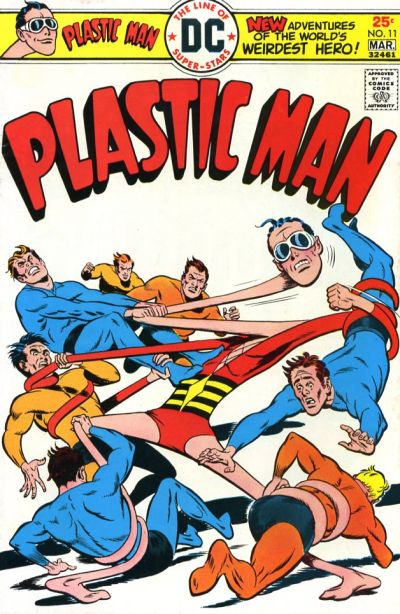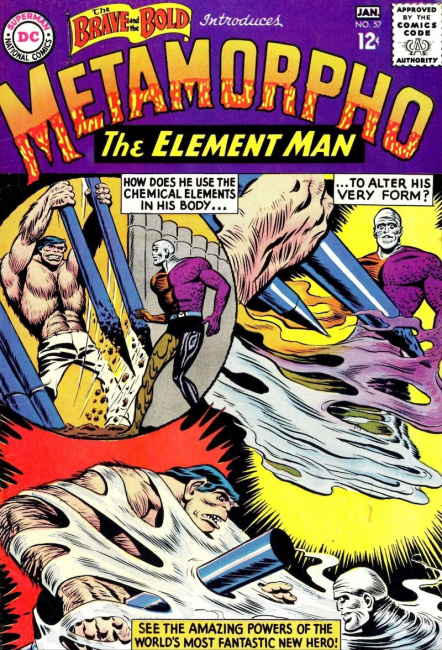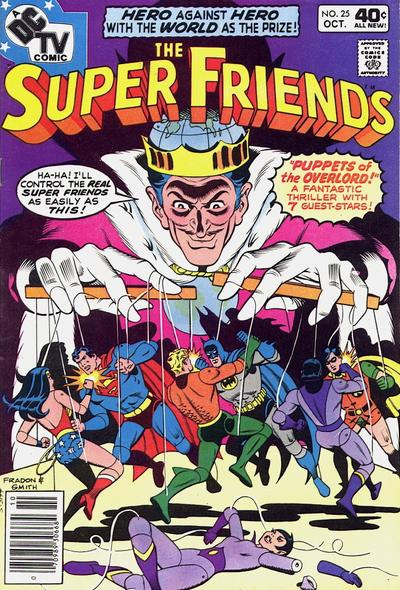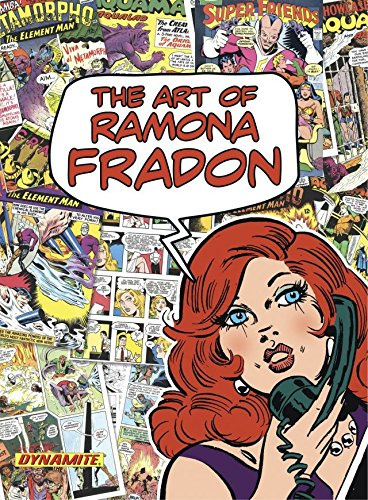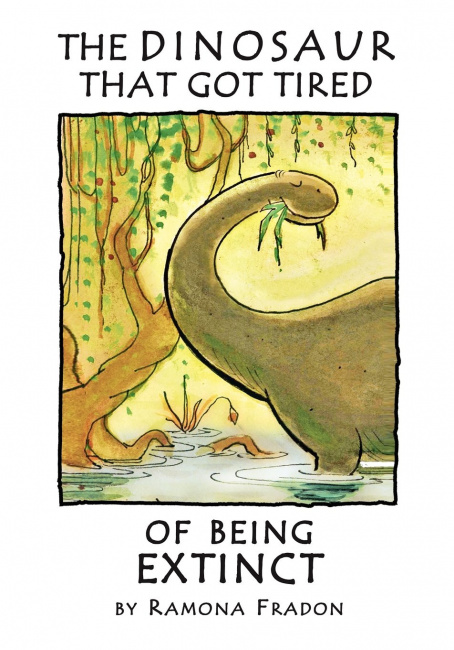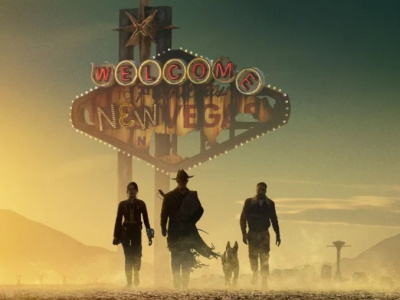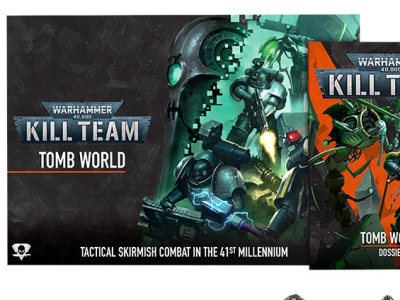Artist Ramona Fradon died on February 2, 2024, at the age of 97, just a few weeks after formally retiring from comics.
Fradon was born Ramona Dom on October 2, 1926; she was born in Chicago, but her family moved to the Westchester County suburbs of New York City when she was five years old. Fradon’s father, Peter Dom, was a commercial letterer who designed two fonts, Dom Casual and Dom Bold, as well as logos for well known brands such as Elizabeth Arden, Lord & Taylor, and Camel. As a child, Fradon loved reading Johnny Gruelle’s Raggedy Ann books as well as newspaper comics including Bringing Up Father, The Phantom, Alley Oop, and Flash Gordon.
“I guess the reason I became an artist is because I married one,” Fradon told Howard Chaykin in an interview published in the 2014 Dynamite Entertainment book The Art of Ramona Fradon (see “‘The Art of Ramona Fradon’”). She initially went to art school as a fashion illustrator, following her father’s wishes. After a year at the Parson’s School of Design, she decided fashion was not for her and moved to the Art Students League in order to focus on figure drawing. There she met Dana Fradon, a cartoonist whose work was already being published in the New Yorker; they were married in 1948.
Money was also a motivation for going into comics, Fradon freely admitted; she had friends in the business and one suggested she give it a try. She and Dana collaborated on a comic of their own (never published), so she could learn the basics of paneling and pacing, and she studied other comics as well. When she felt she was ready, she submitted some pages to Fox Features. They assigned her a 12-page story, but, she told Chaykin, “Someone told me they didn’t pay, so I returned the script. I was actually kind of relieved because I was so intimidated by the assignment. Then she went to Timely Comics (later Marvel Comics), where she was assigned a few war stories. She struggled to draw them, and in the end, she said, “I spilled ink on one of the pages and was terminated.”
Fradon’s fortunes changed for the better when she went to DC Comics, where editor Murray Boltinoff hired her to draw “Shining Knight” a six-page story in Adventure Comics. This suited her much more, and she became a regular artist for that title, working with editor George Kashdan as the artist for Aquaman, which in the 1950s was a regular feature in Adventure Comics. “I drew very slowly,” she told Chaykin. “A 17-page story was about all I could handle in a month back in those days.” Nonetheless, throughout the 1950s she drew an Aquaman story almost every month and occasionally did war and crime stories as well.
In 1964, Kashdan told Fradon that he had an idea for a new character, Metamorpho, who could change himself into different elements. Fradon helped design the character, dispensing with the usual capes and hoods. “It finally occurred to us that, since his body had to transform itself into different elements, clothes would get in his way and maybe he shouldn’t have any.” So he wore shorts and a belt. She enjoyed working on the comic, because it allowed her to stretch in a more cartoony direction, but she left after four issues, stepping away from comics from 1964 to 1977 to focus on raising her daughter.
When she returned, comics had changed. Roy Thomas hired her to draw The Cat for Marvel Comics, but when she went to the office, she found it a sharp contrast to the staid, suit-and-tie atmosphere she was accustomed to at DC. “It was so chaotic,” she told Chaykin. “There were cubicles, not offices like at DC. They were filled with coffee cups and bottles and papers spilling onto the floor, and Roy Thomas was in a black turtle neck with his hair down to his shoulders. Everybody looked like a hippie.” She was also startled when she was handed, not a script, but a paragraph describing the story. Without dialogue or a clear idea of the characters or their motivations, Fradon was lost. The so-called “Marvel Method” didn’t work for her. The story was killed, but even when she got a full script for a Fantastic Four story, Fradon wasn’t happy at Marvel.
Back at DC, Fradon started working with editor Joe Orlando, doing stories for House of Secrets and House of Mystery, as well as one for DC’s humor magazine Plop! Then Orlando moved her to Plastic Man, which she enjoyed drawing, and Freedom Fighters, which she loathed. When Plastic Man was canceled, she started drawing Super Friends, staying for four years, and she also did the art for a boxed set of children’s books, The Story of Superman.
For much of her comics career, Fradon worked at her home in Connecticut, coming to the office only to drop off her artwork and collect a new assignment, and she didn’t socialize with editors or other creators. In a 1999 conversation with artist Marie Severin, reprinted in Comic Book Women (University of Texas Press, 2022), she spoke of one DC staffer who would come up behind her and kiss her on the back of the neck when she came in to drop off pages. “I always had this feeling that if I went into the bullpen, there would be some kind of disaster,” she said. (Severin countered that the EC staff she worked with were all gentlemen.) Fradon did have a good relationship with Boltinoff had a good relationship. “I think he was only interested in the artwork,” she told Chaykin. “Murray shared an office with Jack Schiff, Mort Weisinger and George Kashdan, and I recall that they all went silent when he first brought me in, but other than that, they all seemed to accept me.”
In 1980, Fradon left comic books for comic strips, becoming the artist for Brenda Starr, Reporter. Although she had the job for 15 years, she described it as a “treadmill,” telling Chaykin that she moved because of the higher pay rate, which in retrospect was a mistake as page rates for comic book artists went up shortly after she left. “If I had stayed in comics another year, I would have made three times as much,” she said. Instead, she spent years struggling with the syndicate to get paid what she was owed, while grinding out six daily strips and a Sunday strip every week.
Fradon also began attending New York University in 1977, where she studied psychology and ancient religions; because she was working full time, it took her 11 years to get her degree. She and Dom were divorced in 1982.
In 1995, Fradon retired from Brenda Starr, Reporter, although she continued to do commissions and occasionally other work as well, including two SpongeBob Comics issues that featured Mermaidman, an homage to Aquaman, and a Simpsons Comic issue that had a character called Mufelatto, the Aliment Man, a spoof of Metamorpho. She wrote a book, The Gnostic Faustus: The Secret Teachings Behind the Classic Text, and she wrote and illustrated the children’s book The Dinosaur That Got Tired of Being Extinct. And she continued to appear at conventions and draw commissions, officially retiring only in January 2024, via an announcement by her dealer Catskill Comics.
Fradon’s art was widely admired by her peers, and she was inducted into the Eisner Awards Hall of Fame in 2006.
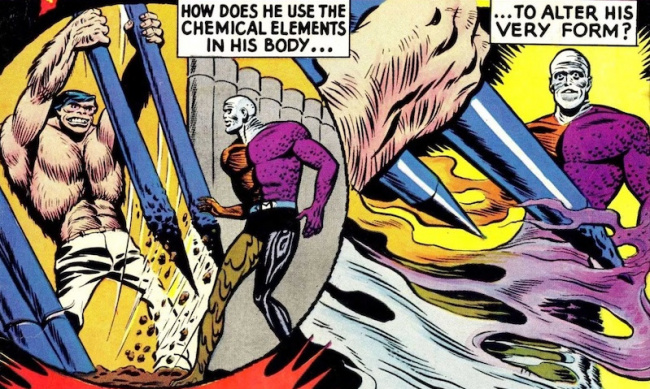
Artist Drew Aquaman, Plastic Man, Super Friends, and Brenda Starr, and Co-Created Metamorpho
Posted by Brigid Alverson on February 27, 2024 @ 11:36 am CT
MORE COMICS
Showbiz Round-Up
August 25, 2025
Hollywood news continues to trickle in late into August. Time for a round-up!
At Anime NYC
August 22, 2025
The winners of the 2025 American Manga Awards, organized by Anime NYC owner LeftField Media and Japan Society, were announced in a ceremony at Anime NYC in New York on August 21.
MORE NEWS
'Volume 2' Features New Promo Card
August 25, 2025
Bandai will release Tin Pack Set Vol.2 , for One Piece CG , into retail.
New 'Kill Team' Boxed Set
August 25, 2025
Games Workshop will release Kill Team: Tomb World , for Warhammer 40,000 , which will hit preorder soon.



